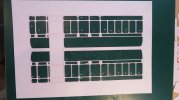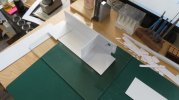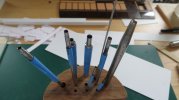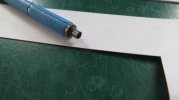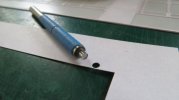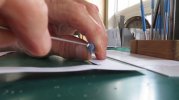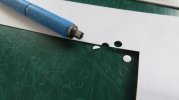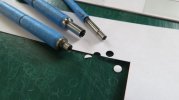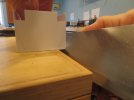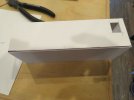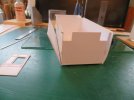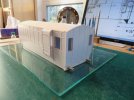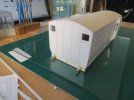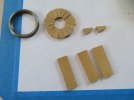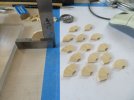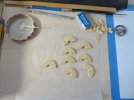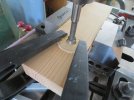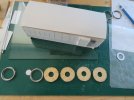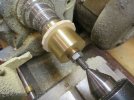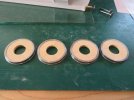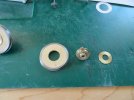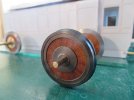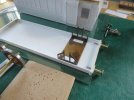Stumbling along with the guards look outs (I cannot remember the proper name) it was a case of figuring it out as I went along, after fitting the roof and setting up the guards end wall. The first plan was to set up the fret inside the side walls so I used a piece of the cardstock to get the proper setback..... well that went out the window pretty quickly.

It looked nice while it lasted, but I needed to get the top and bottom sheeting set up as well, so decided I would overlay the card stock after getting the support right.
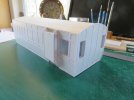
I shaped a bit of .188" styrene on one edge enough for 4 pieces for the tops of the two vans. I used the block plane and a sanding stick to get very close.
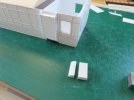
And then after gluing the top and the bottom bits in, I cleaned up the whole thing Sanding towards the centre so as to not damage the card stock on the sides. I needed to develop the fret top and bottom in order to make the fret appear to line up when looking straight on the side. I used the simple method of marking a tally strip and transferring to the fret sheet, after it was cut I glued it from the centre out.
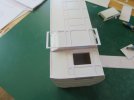
I noticed that the tumble-homes are a bit shallower that on the drawing something to work out going forward.

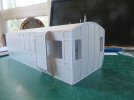
Overall I am happy with the progress, knowing that practice will improve things as I become more clear about the processes.
Michael
